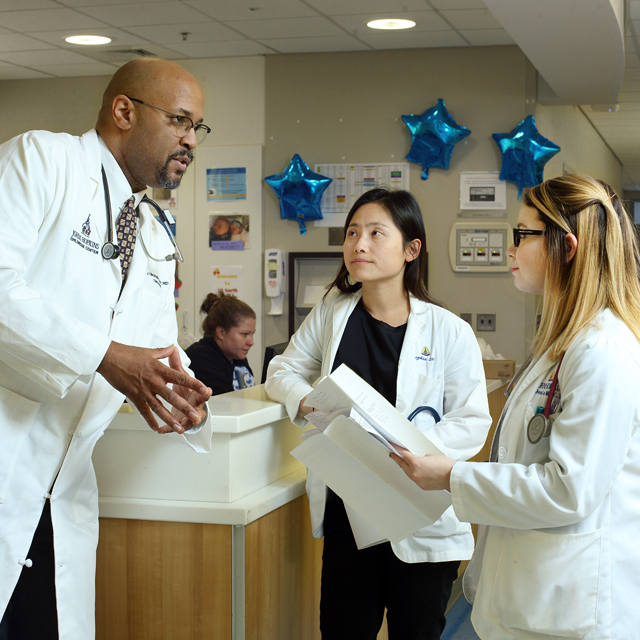

June 21, 2019
How did you find your way to Johns Hopkins Children’s Center?
Fresh out of undergraduate studies at Duke, my Hopkins story began as a medical student in 1991. Here, at the school of medicine, I fell in love with the rotation in pediatrics, and have stayed ever since.
And neonatology as well?
Yes. Interestingly, many people think of neonatologists as only caring for premature and critically ill babies but many of us perform routine newborn care also. As medical director of the newborn nursery, for instance, I see healthy babies all the time with minimal stays in the hospital and uncomplicated lives afterwards. Both areas have excited and intrigued me.
When did you get the teaching bug?
My interest in teaching and how people learn goes back to my childhood watching both of my parents, who were schoolteachers. That interest was rejuvenated when I became the director of the Resident Lecture Series in the neonatal intensive care unit in 2007. In that series, the residents and teachers deal with a range of medical, social and ethical issues in newborns.
Now you are working with medical students as the pediatrics clerkship director.
Yes, and in a format different from my pediatrics clerkship here. The advent of the new Hopkins School of Medicine curriculum in 2010 introduced PRECEDE, or Pre-Clerkship Education Exercises, for the medical students. The faculty teaching team in our department employs multiplatform learning in these exercises, some didactic and experiential learning, and a lot of simulation—how to do lumbar punctures or draw blood on simulated models, for example. Using standardized patients, we also help the students learn how to give bad news in a nursery setting or diagnose abdominal pain in an adolescent. In addition, all students still complete inpatient and outpatient rotations at Johns Hopkins and our community partners.
How has the clerkship been received by the students?
Overall, very well. It is not uncommon for them to say, “I learned a lot about the management of children with chronic neurologic disabilities,” or, “In my inpatient experience I saw a patient with a condition I had never heard of before and learned a lot about it.” Those statements energize me because they indicate that I am meeting my mission as a pediatric educator. Many students say this clerkship is a unique experience, and over the last six years, graduating students have rated our clerkship No. 1 or 2 among school of medicine clinical rotations on the Association of American Medical Colleges Graduation Questionnaire.
What is it about education that inspires you?
I have a passion for teaching all learners, including those who may not have an initial interest in pediatrics. There is great joy in seeing medical students take ownership and engage in taking care of children along the continuum. For example, we have a session where we teach them how to do the neonatal exam— many students may have played with a baby but have never had the experience of actually examining a newborn. I love the opportunity to expose them to that experience.
You sound like a recruiter for future neonatologists and pediatricians.
True, but I also remind all students that at some point during their careers, they may be caring for children. We also focus on certain qualities emphasized in our clerkship (listening, empathy, compassion and clinical reasoning), which are all key features in being a good clinician.

